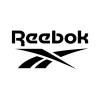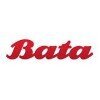Filter interviews by
Adi Sports Interview Questions and Answers
Be the first one to contribute and help others!
Interview questions from similar companies

Basic Gk Questions or current affairs
(2 Questions)
- Q1. Tell me about yourself
- Q2. Why do you want to join us?

I applied via Campus Placement and was interviewed in Jul 2020. There was 1 interview round.
Interview Questionnaire
3 Questions
- Q1. First paly game
- Q2. And second question is group decision topic
- Q3. Third question is mathmatical and Company related and sport related question
Interview Preparation Tips

I appeared for an interview in Jan 2024.
(1 Question)
- Q1. What are the roles and responsibility

I applied via Company Website and was interviewed in Oct 2023. There were 2 interview rounds.
Basic SQL and tableau questions
(1 Question)
- Q1. How do you work in a team?

Write a a python code to reverse string without slicing.

I applied via LinkedIn and was interviewed before May 2023. There were 3 interview rounds.
(1 Question)
- Q1. SQL and Visualizationbased questions
Case study for business problems
(1 Question)
- Q1. Behaviour fit round

Interview Questionnaire
2 Questions
- Q1. How to sale
- Ans.
To sell effectively, understand customer needs, build relationships, demonstrate value, and close the deal.
Listen actively to understand customer needs and pain points.
Build rapport and trust with customers through effective communication.
Highlight the unique value proposition of the product or service.
Provide demonstrations or samples to showcase the benefits.
Address objections and concerns to alleviate customer hesit...
- Q2. How to convince customer
- Ans.
To convince a customer, understand their needs, build trust, provide value, and address objections.
Listen actively to understand their needs
Build trust by being honest and transparent
Provide value by offering solutions that meet their needs
Address objections by providing evidence and addressing concerns
Follow up to ensure satisfaction and build long-term relationships
Interview Preparation Tips

I applied via Company Website and was interviewed before Jun 2021. There were 2 interview rounds.
Questions like reverse linked list, palindrome number etc..
(1 Question)
- Q1. Tech discussion on java, spring boot, distributed systems. Interview was very basic.
Interview Preparation Tips

(2 Questions)
- Q1. How much experience do you have?
- Ans.
I have over 10 years of experience in the field, with a focus on project management and team leadership.
Over 10 years of experience
Specialize in project management and team leadership
Successfully led multiple projects to completion
- Q2. Why did you leave where you were working before?
- Ans.
Seeking new challenges and opportunities for growth.
Looking for new challenges and opportunities for professional growth
Desire for a change in work environment or company culture
Seeking better work-life balance or career advancement
Company restructuring or downsizing leading to job loss
(2 Questions)
- Q1. You understand the technical aspects of the product
- Q2. Yes I understand
Interview Preparation Tips
Be professional: Follow up with a thank-you note after an interview to show your interest and enthusiasm.
Network: Connect with professionals in your field to learn about new opportunities and get career advice.
Learn new skills: Take the opportunity to learn new skills that can help you stand out from other candidates.

(2 Questions)
- Q1. Self introduction
- Q2. About sports
Adi Sports Interview FAQs
Tell us how to improve this page.
Interview Questions for Popular Designations
- Associate Interview Questions
- Team Lead Interview Questions
- Software Engineer Interview Questions
- Design Engineer Interview Questions
- Business Analyst Interview Questions
- Associate Software Engineer Interview Questions
- Test Engineer Interview Questions
- Senior Software Engineer Interview Questions
- Show more
Adi Sports Interview Process
based on 3 interviews
Interview experience
Interview Questions from Similar Companies
Adi Sports Reviews and Ratings
based on 49 reviews
Rating in categories
|
Store Manager
15
salaries
| ₹3.5 L/yr - ₹6.7 L/yr |
|
Area Sales Manager
11
salaries
| ₹5 L/yr - ₹11.7 L/yr |
|
Floor Manager
6
salaries
| ₹2.4 L/yr - ₹5.2 L/yr |
|
Retail Store Manager
5
salaries
| ₹4.4 L/yr - ₹5 L/yr |
|
Assistant Merchandiser
4
salaries
| ₹2.2 L/yr - ₹6.1 L/yr |

NIKE

PUMA

Decathlon

Reebok
- Home >
- Interviews >
- Adi Sports Interview Questions









